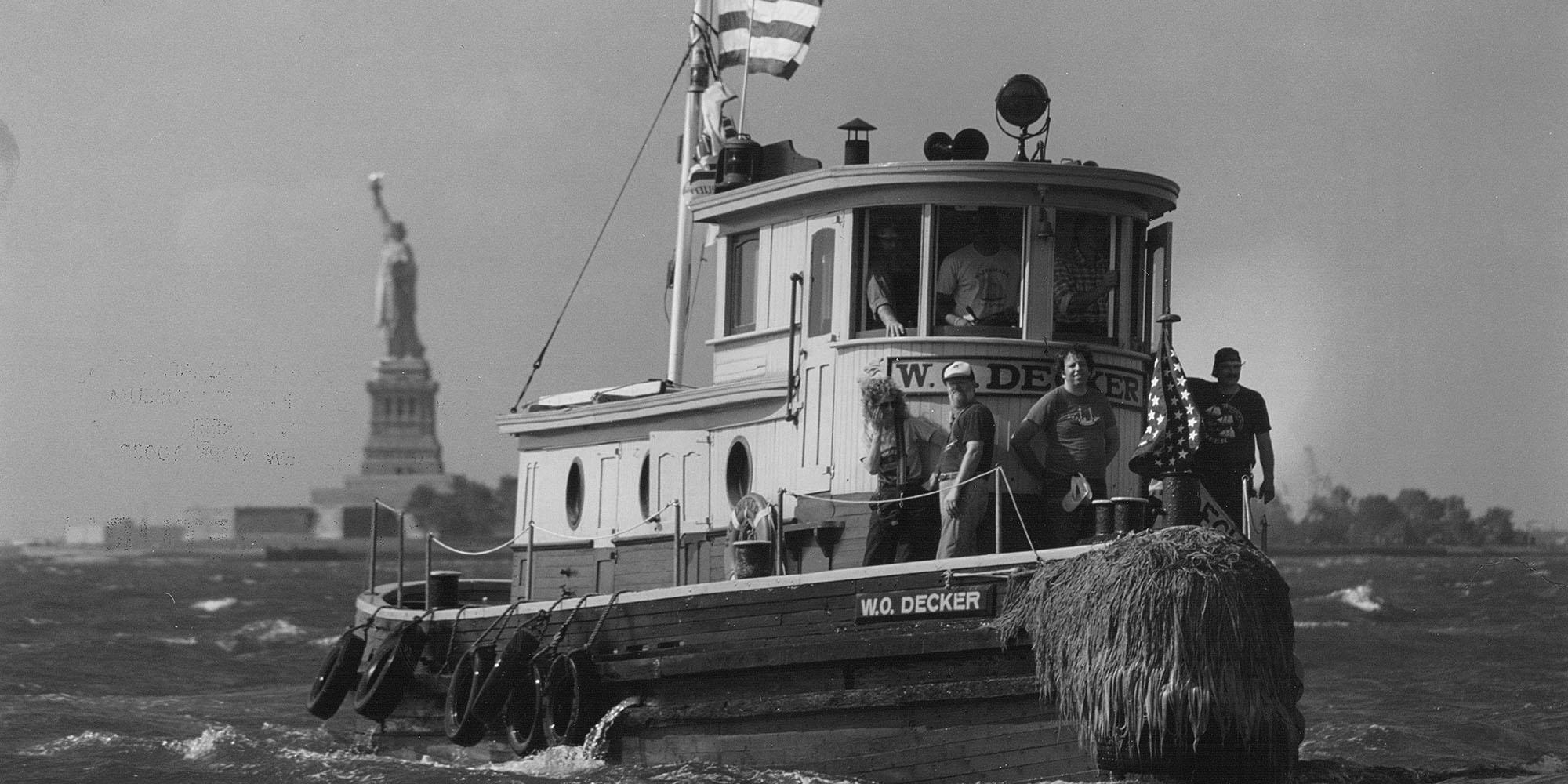The wooden tugboat W.O. Decker was built in Long Island City, Queens, in 1930 for Frederick and John Russell’s Newtown Creek Towing Company. Originally named Russell I, after the towing company’s owners, she was renamed W.O. Decker in 1946 after being sold to the Decker family’s Staten Island tugboat firm. The tugboat was donated to the South Street Seaport Museum in 1986.
W.O. Decker is listed on the National Register of Historic Places and is an exemplary model of the types of steam tugs that were once an abundant sight in New York Harbor. This unique vessel is a true testament to New York City’s maritime heritage, which is a direct factor in the city’s global prominence today and is the last surviving New York-built tugboat.
Today, W.O. Decker is a beloved member of the Seaport Museum fleet and serves as a platform for educating visitors about New York’s maritime and industrial history. On weekends during the warmer months, she takes passengers into the harbor for views of the Lower Manhattan skyline and Statue of Liberty and to experience her running. This unique vessel is a true testament to New York City’s maritime heritage and fosters a deeper understanding of the significance of South Street as the place “Where New York Begins.”
Tugboats In New York Harbor
From the opening of the Erie Canal in 1825 through the late 19th century, New York Harbor was populated by a variety of towing craft. Large sidewheel towboats were used to move rafts of canal boats and other craft, picked along the Hudson River, down to the port where smaller tugs delivered them to their final destinations. Big ongoing propeller tugs towed steering coal barges from New Jersey to New England. Major railroads operated large tug fleets to transfer loaded railroad cars by barge to and from freight terminals in New Jersey and Staten Island. Private tug companies specialized in berthing cargo and passenger vessels.
Creek tugs such as W.O. Decker were typically used to tow barges in and out of the navigable creeks that branched off of New York Harbor. They served as stern tugs assisting larger tugboats towing strings of barges and they helped berth coastal schooners at docks on the creeks where lumber and coal were off-loaded. They were also used in shifting barges and railroad car floats. It was not uncommon for creek tugs to tow three to four barges at a time, requiring expert handling in narrow and twisting waterways full of berthed ships, bridges, barges, and moving tows.

Thomas W. Kennedy (American, active ca. 1890-1915). [View of tugboats off Coenties Slip], ca. 1890-1915. Silver gelatin dry plate negative. Thomas W. Kennedy Collection 2016.003.0036
Many of the above harbor activities became obsolete in the mid-20th century as trucking replaced rail and water transport; passenger liners gave way to airplanes; and large fleets of cargo ships were replaced by fewer larger container ships.
Decker and Dayton
Russell I was sold to Mary Decker in Staten Island in 1946. She renamed the tug for her father-in-law, William Oscar Decker and repowered the boat with the first diesel engine.
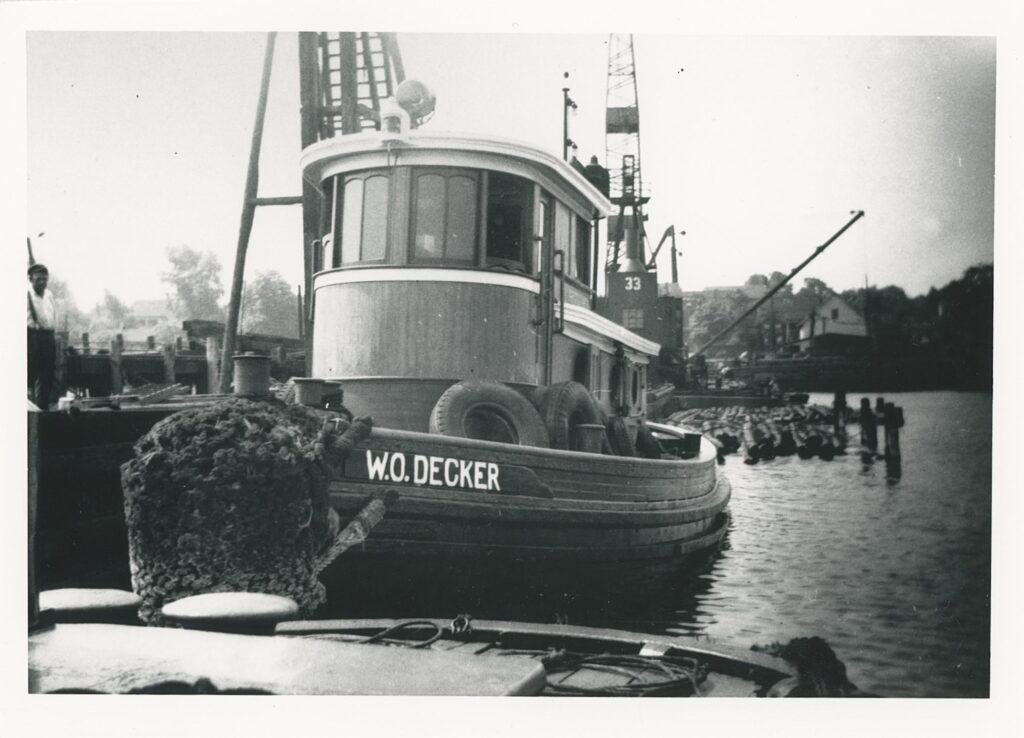
The newly named W.O. Decker worked for many years in the Arthur Kill and towed construction barges up narrow passages for the building of bridges on the New Jersey Turnpike, the first leg of which was completed in 1951. This vehicular artery followed the Arthur easily, in the same way that railroad lines also commonly followed existing waterways.
Alternate shipping methods converged on these routes, not only to complement and compete with existing transportation business, but with the centers of trade that were already established along these routes.
[Tugboat W.O. Decker docked at an unidentified pier], ca. 1950s. South Street Seaport Museum Archives.
In 1967, the Decker family sold the tug to the George Rogers Construction Co. of Mariners Harbor, which sold the vessel the following year to the Youghiogheny and Ohio Coal Company. With her new owner, she was renamed Susan Dayton and spent much of the following decade towing coal barges.
W.O. Decker at the Seaport Museum
Soon after the Seaport Museum was founded in 1967, it became clear that one of the most appropriate vessel types to have represented in the fleet of historic ships was a steam tugboat.
Since the 1830s very little had moved in the Harbor without assistance from tugboats. They had berthed sailing ships and steamers, had brought canal boats to Port, and had moved lighter barges back and forth across the Harbor. Tugboats appeared in earliest photographs of the South Street waterfront, lying at the same piers amid the larger sailing vessels.

The Museum began a search for an appropriate tug, which culminated in the acquisition of the 1889 steam tugboat Mathilda in 1970.
Due to deterioration of her steel hull plating, Mathilda sank at the Museum’s pier in 1976. Since this deterioration was widespread, and the Museum was not in the position to rebuild the majority of the vessel’s bottom, she was stored out of the water inside a West Side pier loaned to the Museum by the Port Authority of New York and New Jersey. After seven years, Mathilda was donated to the recently opened Hudson River Maritime Museum in Kingston, New York, where she is on display, still out of the water.
[Tugboat Mathilda and lightship Ambrose docked at a Museum pier], 1971. 35mm color film slide. South Street Seaport Museum Archives.
In 1978, W.O. Decker was purchased by George Matteson, a captain, author, and advocate for the preservation of historic ships. Matteson brought her to South Street where, in exchange for berthing privileges, she was used for shifting the Museum’s growing fleet of historic vessels. With Mathilda out of the picture, and since W.O. Decker was already at South Street, the Museum began considering acquiring the vessel to tell this critical part of the maritime history of New York.
W.O. Decker was built in New York, by a New York-based company and spent the majority of her working career performing a variety of towing jobs in New York Harbor waterways. Externally, little has been altered from the appearance she had at the beginning of her career in 1930. Initially, she was considered “too small to be visited by the public at South Street, or to house any interpretive exhibits [but] she would be viewed by the public without boarding and interpreted by displays on the shore. […] The Decker could represent the Museum at gatherings of historic powered craft. Regular operation of the vessel is going to be essential for her survival.” –Norman Brower, former Museum historian and curator of historic ships.
George Matteson eventually donated the tug to the Museum in 1986 to be used in a variety of ways, from historic ship maintenance platforms to educational programs and private charters.
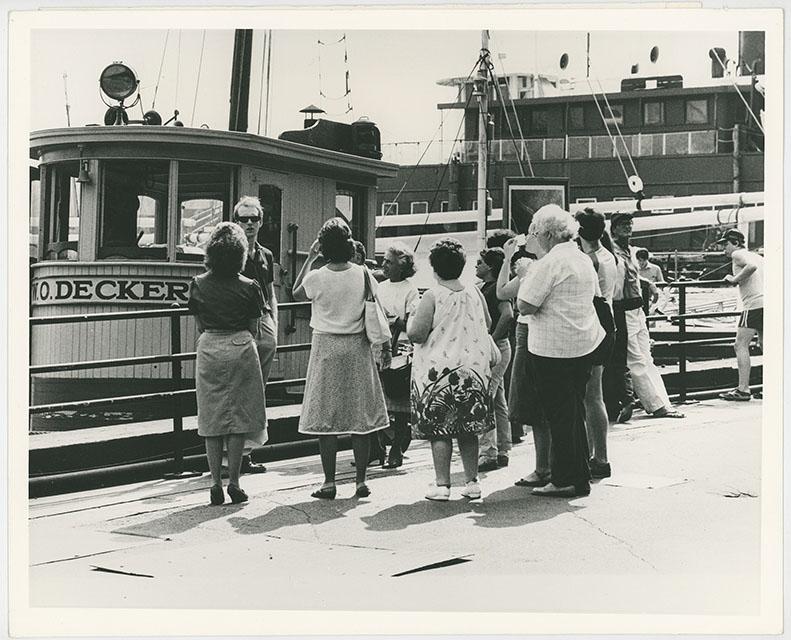
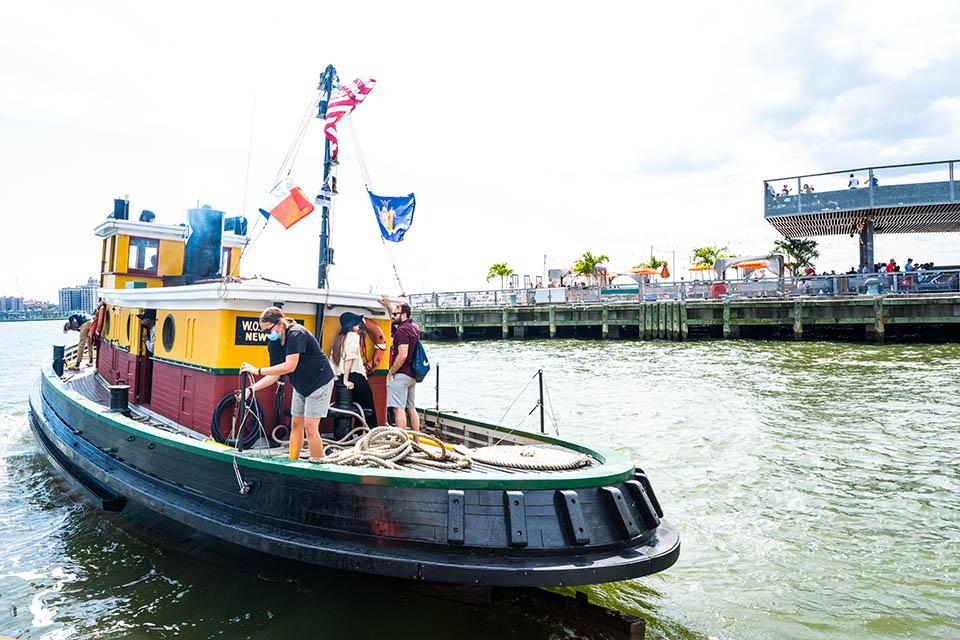
Left: Jeff Perkell, photographer. [Museum visitors listening to a tour guide in front of tugboat W.O.Decker] ca. 1983. South Street Seaport Museum Archives.
Right: Image credit Richard Bowditch
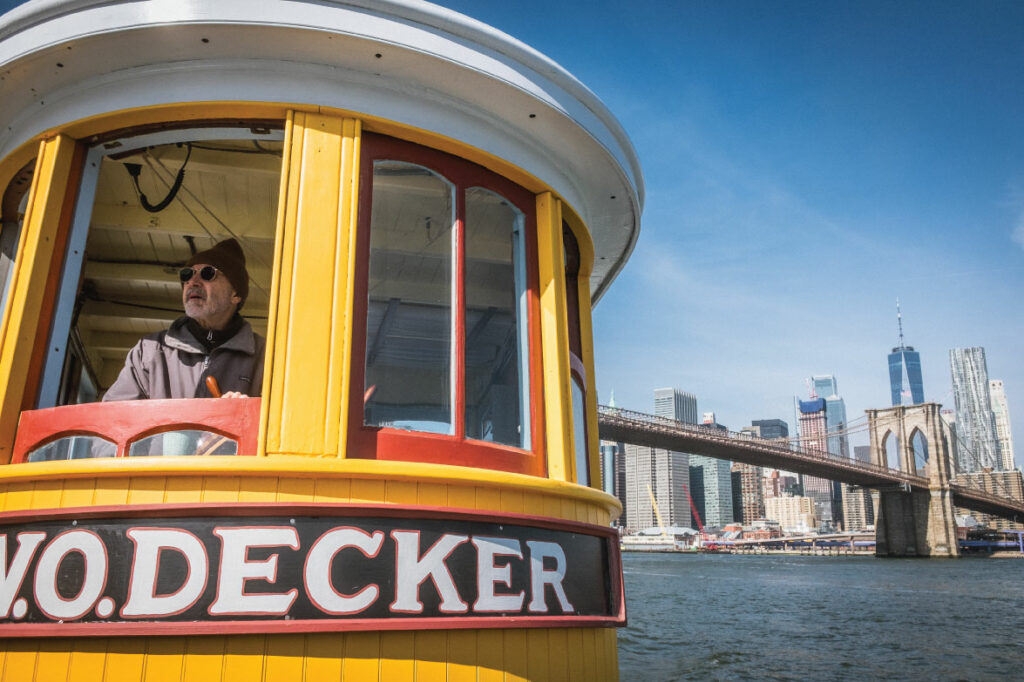
Education Programs on W.O. Decker
W.O. Decker is available for educational programs middle school high school university, smaller groups, especially good for marine science studies or and getting close to various habitats and the working waterfront.
Additional readings and resources of tugboats, W.O. Decker, and Newtown Creek
“Portrait of a Creek Tug” by Ryan B. Witte, 2022. South Street Seaport Museum Blog.
“Historic 1930 Tug ‘W. O. Decker’ Visits Hudson River Maritime Museum” 2020. Hudson River Maritime Museum’s History Blog.
“Tugboats and Shipyards: The Russells of New York Harbor, 1844–1962” by Hillary Russell, Jr., 2019.

